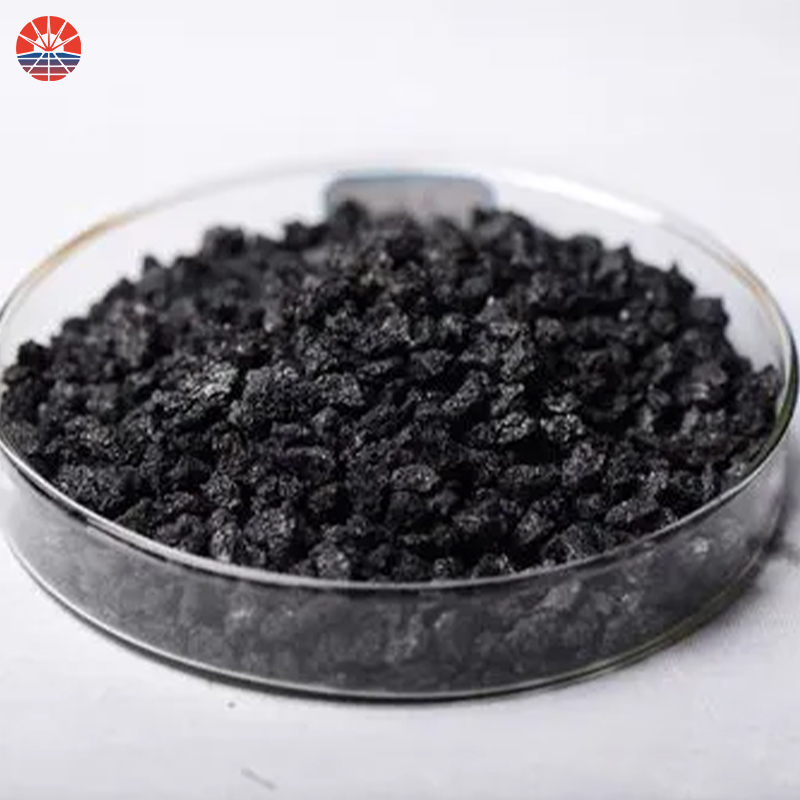Demand Status And Development Prospect Of Graphitized Petroleum Coke Carburizer Industry
Using graphitized petroleum coke (GPC) in foundries offers several benefits. Here are some of the key advantages:
Carbon Additive: GPC serves as a carbon additive in foundries. It is added to molding sand or used as a separate material during the metal casting process. The addition of GPC helps improve the carbon content and overall quality of the casting. It ensures the desired carbon level is achieved, enhancing the metallurgical properties of the castings.
Improved Carbon Content Control: GPC provides a reliable source of carbon, allowing foundries to have better control over the carbon content in the metal being cast. This enables precise control of the mechanical and metallurgical properties of the final casting, such as hardness, strength, and wear resistance. GPC offers consistency in carbon content, reducing variability in the casting process.
Enhanced Graphite Formation: GPC contains a highly graphitic structure. When added to the mold or casting material, it promotes the formation of graphite flakes during solidification. The presence of graphite in castings improves lubrication, mold release, and machinability. It also contributes to improved casting quality, reducing defects like shrinkage and porosity.
Reduced Casting Defects: The use of GPC as a carbon additive helps minimize casting defects, such as sand inclusions and gas porosity. GPC's high carbon content and graphitic structure contribute to the formation of a strong carbonaceous layer on the mold surface, reducing the likelihood of sand-related defects. Additionally, the graphite formation aids in the release of gases during solidification, reducing the risk of porosity.
Improved Thermal Conductivity: GPC exhibits excellent thermal conductivity due to its highly graphitic structure. When added to the casting material, it enhances heat transfer during solidification. Improved thermal conductivity promotes uniform cooling and reduces the likelihood of thermal gradients and stresses within the casting, resulting in improved dimensional stability and reduced cracking.
Cost-Effectiveness: GPC is a cost-effective carbon additive compared to alternative carbon sources. Its availability, desirable properties, and efficient production processes make it a favorable choice for foundries. GPC offers a balance of cost and performance, contributing to cost optimization in casting processes.
Low Impurity Content: GPC is processed to have low impurity levels, including sulfur, nitrogen, and volatile matter. This low impurity content helps reduce the risk of unwanted reactions and contamination in the casting process. It contributes to the overall purity and quality of the castings.
Overall, the benefits of using graphitized petroleum coke in foundries lie in its ability to provide a reliable carbon source, promote graphite formation, reduce casting defects, enhance thermal conductivity, offer cost-effectiveness, provide low impurity content, and improve the overall quality of castings.
Graphitized petroleum coke(GPC) Role in foundry factory
Graphitized petroleum coke plays a significant role in foundry factories, particularly in the production of cast iron and steel. Here are some ways in which it is utilized:
Carbon Additive: Graphitized petroleum coke is commonly used as a carbon additive in the production of cast iron and steel. It provides a source of carbon during the melting process, enabling the desired carbon content to be achieved in the final metal composition. The carbon content affects the mechanical properties, such as hardness and strength, of the castings.
Deoxidizing Agent: In foundries, graphitized petroleum coke can be used as a deoxidizing agent. During the melting process, oxygen and other impurities can react with the molten metal, leading to the formation of oxides. The addition of graphitized petroleum coke helps to remove these oxides by providing a reducing environment. This process improves the quality and cleanliness of the metal.
Adjusting Melting Temperature: Graphitized petroleum coke can be used to adjust the melting temperature of the metal. By varying the amount of graphitized petroleum coke added to the furnace, the melting temperature can be controlled. This flexibility allows foundries to optimize the melting process for specific alloys or casting requirements.
Increase Fluidity: The addition of graphitized petroleum coke can enhance the fluidity of molten metal. This is particularly useful in complex casting shapes or thin-walled components where good flowability is required. The increased fluidity facilitates the filling of intricate molds and promotes the formation of sound castings.
Carbon Raiser: Graphitized petroleum coke is also used as a carbon raiser in foundries. It helps to increase the carbon content of the melt, which is important for achieving the desired metallurgical properties and improving the machinability of the castings.
It's worth noting that the specific application and amount of graphitized petroleum coke used in foundry processes may vary depending on the type of metal being cast, the desired properties of the final product, and the specific requirements of the foundry. Foundries often conduct trials and adjustments to determine the optimal use of graphitized petroleum coke for their particular casting processes.














